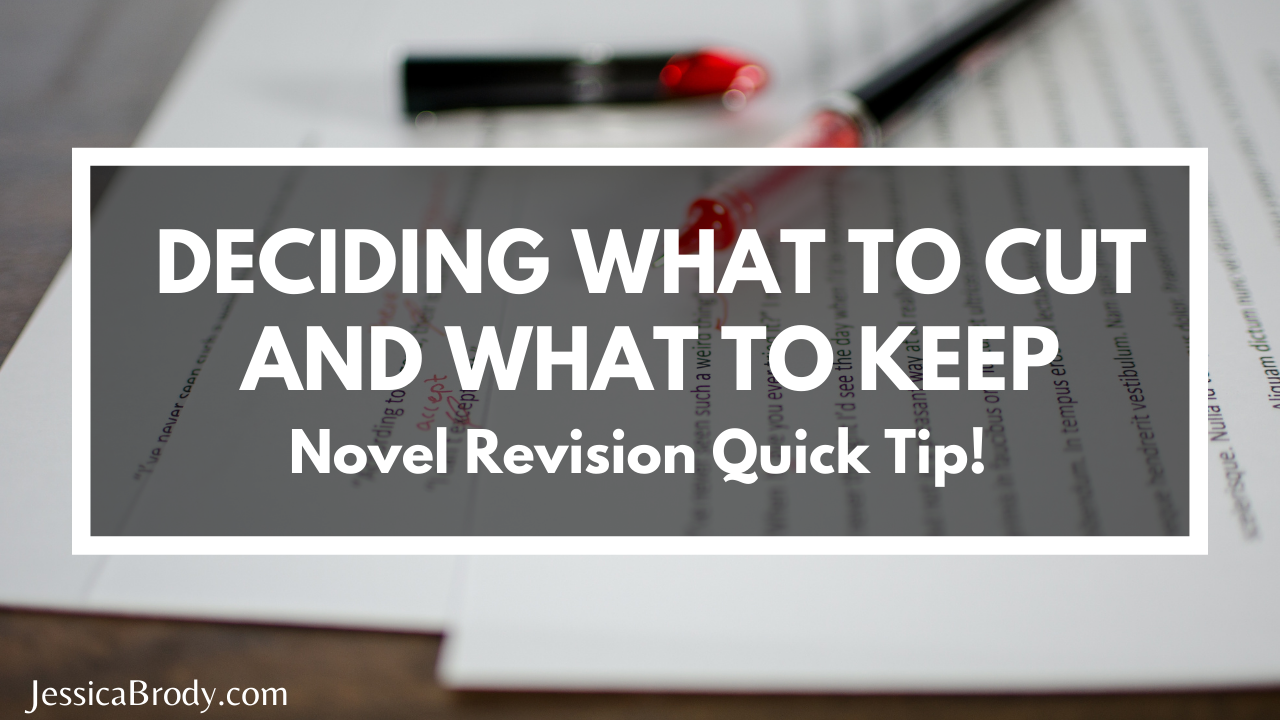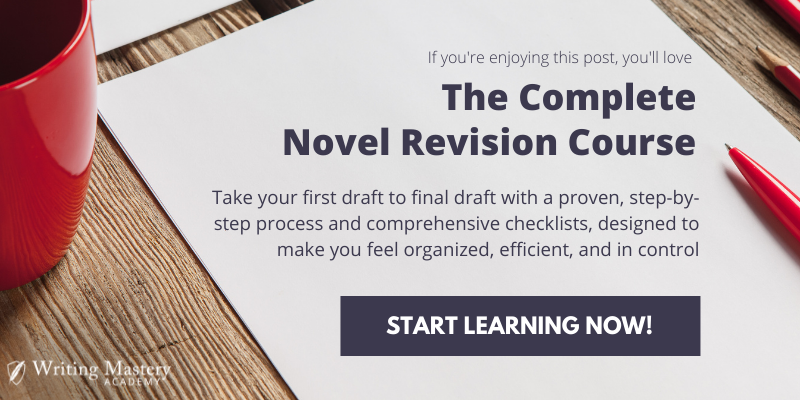Novel Revision Quick Tip: Deciding What to Cut and What to Keep

One of the hardest things a writer has to do is cut scenes from their novel that they really love. In this video, I share with you my tried and true quick test for deciding which darlings to keep and which ones to kill.
A lot of times in the drafting phase, we might get an idea for something (a plot point, a character, a piece of dialogue) that, at the time, we thinks going to be absolutely essential to the plot. It’s going to set up epic-ness to the Nth degree! Then, somewhere along the way, as we get further into the drafting process, the story changes, the characters dictate a new direction, we come up with bigger and better epic-ness, or we simply forget about that thing that was going to be absolutely essential and now it’s…well, not so essential. But, as authors, we tend to fall in love with our non-essential plot points and characters and dialogue (I know I do!), and it can often be hard for us to determine what’s essential to the story and what’s not. We have what I’m going to call “plot blindness”. And that’s where I hope my new revision hack will come in handy. Think of it as sort of prescription eyewear for plot blindness.
Here’s how I came up with it: I was having lunch with a screenwriter friend of mine the other day and she was talking about a screenplay she was working on. She said she was having trouble deciding whether or not to use voiceover for her main character. She said she wrote two versions of the screenplay: one with voiceover and then, one without. “Wow,” I said, “sounds like a lot of work, going through and taking out all that voiceover.” To which she said, “Nah. It pretty much lifted right out.” I thought about that for a moment and that’s when this month’s writing tip came to me. “If it lifts right out,” I said to her, “with barely any rewriting effort on your part, then it probably didn’t need to be there in the first place.” She agreed. And the matter was settled.
VOILA!
I give you my favorite new revision hack:
THE LIFT OUT TEST
It’s very simple. If something lifts out of the story with little or minimal rewriting effort, then it probably didn’t need to be there to begin with. In other words, if you can remove something from your story and it doesn’t leave behind a bottomless plot vortex of complications, it wasn’t an essential part of the story.
A good, well-structured story is a complex, interconnected network of cause and effect. This effects this, which changes this, which leads to this, which ultimately ties together with this at the end. If something isn’t an integral part of that complex network, you can usually tell as soon as you try to delete it…and NOTHING in the story really changes.

The “Lift Out Test” works for pretty much any aspect of your story: scenes, chapters, sub-plots, side-characters, chunks of dialogue, you name it. If you can lift it out of your story and the rest of the plot and/or scene doesn’t crumble around it, or require massive rewriting, it means it wasn’t that connected to the story in the first place. Or the story wasn’t dependent on it. And it can probably just go.
So as you tackle your revisions, trying to decide what stays and what goes, start putting stuff through the Lift Out test. If it lifts right out, then say your tearful goodbyes, and be comforted in knowing that your story will be stronger without it.
Filed under: Big News Tips for Writers Writing Mastery Tagged with: editing novel revision revising Revision Kickstart (LMAP) self-editing writing mastery writing tips